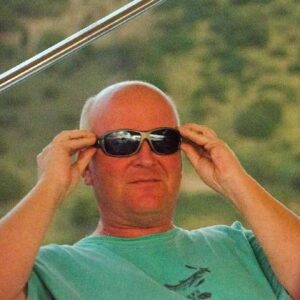Prepared for eventualities
I’ve got to confess that I’m a bit of a “prepper”. I’ve always had some kind of a “bug-out bag” stowed away in a dusty corner. And sufficient dried and canned food for at least a week. Plus, the means to cook it. The reports in 2022 about the shortage of natural gas in Germany, which heats my flat, have forced me to look at my somewhat half-hearted preparations in a new light. After some deliberation, I’ve ordered some additional items for my BOB. And I’ve indulged in buying a rather large and unwieldy lantern. I’ve got fond memories of this type of light from my youth, so it took very little to allow me to indulge. While several manufacturers make lanterns like this, including the ubiquitous Coleman, I opted for the gold standard and bought an original Petromax HK-500 lantern.
Deceptive design
In today’s digital world, this old-school petroleum lamp looks like an unnecessarily complicated archaic piece of ancient technology. It has no electronics, uses liquid fuel, has a lever, and a little hand pump. It looks (and is) complicated to start. But despite its fragile appearance, it hides impressive technology and is very robust. It lies at the peak of many years of technological innovation.
Let there be light!
The creation of light has a history spanning thousands of years, from the original discovery of fire to the making of oil and wax lamps for portable illumination. Old tallow and wax, and oil lamps, have helped dispel the night for millennia, but now we’ve got better, more efficient methods of providing illumination.
While the storm lantern is an excellent, robust tool, it isn’t as efficient as a mantle lantern at lighting up the night. The modern mantle lantern really is a technological masterpiece, despite looking like it belongs in a museum.
Getting the lantern started.
Petroleum, diesel, JET-A fuel (kerosene), or modern gasoline are all liquids at ambient temperatures and can be used in this lantern. The liquid doesn’t burn, but the gaseous vapors do. Thus, the petroleum lamp heats the liquid fuel until it boils, and the gases are mixed with oxygen and combusted. Adding an inert mantle that glows white in the heat of combustion makes this oxidation process produce warm light.
But this isn’t done by just turning on a switch, as with electric light or even a storm lantern.
First, the fuel supply line needs to be heated so that the liquid boils into gas before it reaches the combustion area. This is done by either burning a highly flammable substance, such as alcohol, to heat the assembly or by mixing petroleum with air and burning that to heat the fuel lines.
Once sufficient heat has been generated to boil the main fuel supply, the lantern is turned on, and the resulting petroleum gas-oxygen mixture is burned inside the gas mantle, which heats the ceramic mantle (mainly Yttrium) so that it becomes incandescent.
That extra heat from the mantle keeps the fresh fuel from the reservoir heated and boiling, completing the cycle.


